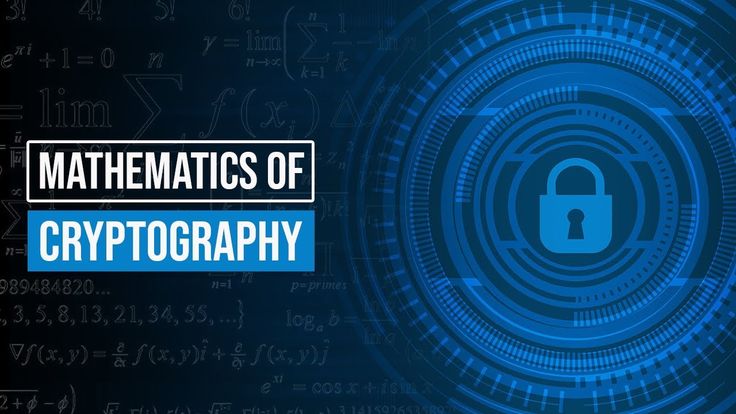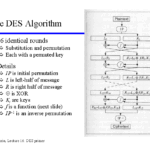Mathematics often evokes images of mundane calculations and classrooms filled with students diligently scribbling numbers on blackboards. But at the intersection of academia and its myriad applications lies an area that is particularly compelling: cryptography. This fascinating field harnesses mathematical principles to safeguard information, shaping everything from personal communications to national security. The journey from math class to military application is a remarkable one, underscoring cryptography’s pivotal role in contemporary society.
Imagine a world devoid of secure communication—where conversations are eavesdropped on, and sensitive information is easily accessible. It raises an intriguing question: what would the ramifications be if the art of cryptography ceased to exist? While pondering this, one can’t help but recognize that secure communication is foundational to establishing trust in both personal relationships and broader societal constructs.
Cryptography employs complex mathematical algorithms to encode data, rendering it unreadable to unauthorized individuals while ensuring authorized parties can decipher it seamlessly. The essence of cryptography lies in its ability to secure sensitive information against adversaries, making it an indispensable tool for governments, military organizations, businesses, and individuals alike. The field has evolved significantly since its inception, transcending simple substitution ciphers to encompass sophisticated methods intertwined with modern computing.
Historically, cryptography was predominantly a military endeavor. During World War II, the enigmatic Enigma machine utilized by the German army showcased how mathematics could influence the outcome of wars. Allied cryptanalysts like Alan Turing employed groundbreaking analytical techniques to decode messages, ultimately paving the way for strategic advantages. Such instances illuminate the profound impact mathematical ingenuity has on security and defense.
In contemporary times, cryptography has permeated daily life, extending beyond military confines. Most notably, it plays a crucial role in the realm of digital communications. Consider the ubiquitous use of social media platforms, online banking, and e-commerce. Every time personal information is exchanged, robust cryptographic methods are employed to protect that data from potential breaches. Yet, while people may take these security measures for granted, the underlying mathematics is both intricate and essential.
At the heart of modern cryptography lies the concept of public key infrastructure (PKI). This system relies on two keys: a public key that can be shared openly and a private key that is kept secret. The mathematics behind generating these keys is profound, rooted in number theory and exponential functions. The security of this system is predicated upon the mathematical difficulty of factoring large prime numbers, a task that computers struggle with even today. The challenge is that, as computational power grows, so do concerns regarding the longevity and efficacy of current cryptographic practices.
As technology evolves, the demand for more robust cryptographic solutions intensifies. Quantum computing presents a particularly captivating challenge. Unlike classical computers, which process information in binary, quantum computers harbor the potential to manipulate data in ways that could rapidly compromise existing cryptographic algorithms. As a result, cryptographers are now racing against time to develop quantum-resistant algorithms. This intersection of mathematics and technology serves as a reminder of the perpetual need for adaptation in the face of evolving threats.
The implications of cryptography extend beyond the individual to the societal level. Governments utilize cryptographic methods to secure sensitive diplomatic communications, assist law enforcement in monitoring criminal activities, and protect national security interests. Cybersecurity analysts work tirelessly to fortify infrastructures against potential attacks that exploit weaknesses in existing systems. Thus, cryptography acts as a bulwark in our increasingly digital world, safeguarding not only private data but also the integrity of nations.
The discussion inevitably raises questions about the balance between security and privacy. While cryptography is essential for protecting information, it also presents ethical dilemmas. For instance, should governments have the authority to access encrypted data in the name of national security? Or do individuals possess an inherent right to privacy, even when it may hinder law enforcement efforts? These debates continue to shape the landscape of regulations and create a complex interplay between technology and ethics.
Furthermore, as the world becomes ever more interconnected, the intricacies of international relations prompt a reevaluation of cryptography’s role on the global stage. Transnational organizations may leverage cryptographic technology to shield communications from foreign adversaries, while nation-states strive to outpace one another in developing advanced cryptographic capabilities. What does this mean for diplomacy and international security? The calculus of trust becomes increasingly complicated, as potential allies and adversaries vie for supremacy in technological prowess.
In conclusion, the journey from math class to military applications encapsulates the transformative power of cryptography. By leveraging mathematical concepts, individuals and organizations can ensure secure communication in an era fraught with uncertainty. While the challenges posed by advancements in technology are formidable, history shows that innovation in this sphere is crucial. As society forges ahead, embracing the complexities of cryptography will be vital for safeguarding our most treasured information against an ever-evolving landscape of threats.
Ultimately, the exploration of cryptography is not merely an academic exercise but rather an imperative for securing the future—a testament to the intricate dance between mathematics, technology, and human interaction in an age where information is both currency and weapon.









Leave a Comment